Taxonomy
Family: Megachilidae
Subfamily: Megachilinae
Tribe: Anthidiini
Genus: Pseudoanthidium, Friese 1898
Subgenus: Pseudoanthidium, Friese 1898
Species: Pseudoanthidium stigmaticorne (Dours, 1873)
Background
Pseudoanthidium stigmaticorne are relatively small, 6–9 mm bees. They have a predominantly black
integumentintegument:
a tough, protective outer layer
with symmetrical yellow spots on their face,
tergaterga:
the segments on the top side of the abdomen, often abbreviated when referring to a specific segment to T1, T2, T3, T4, T5, T6, or T7
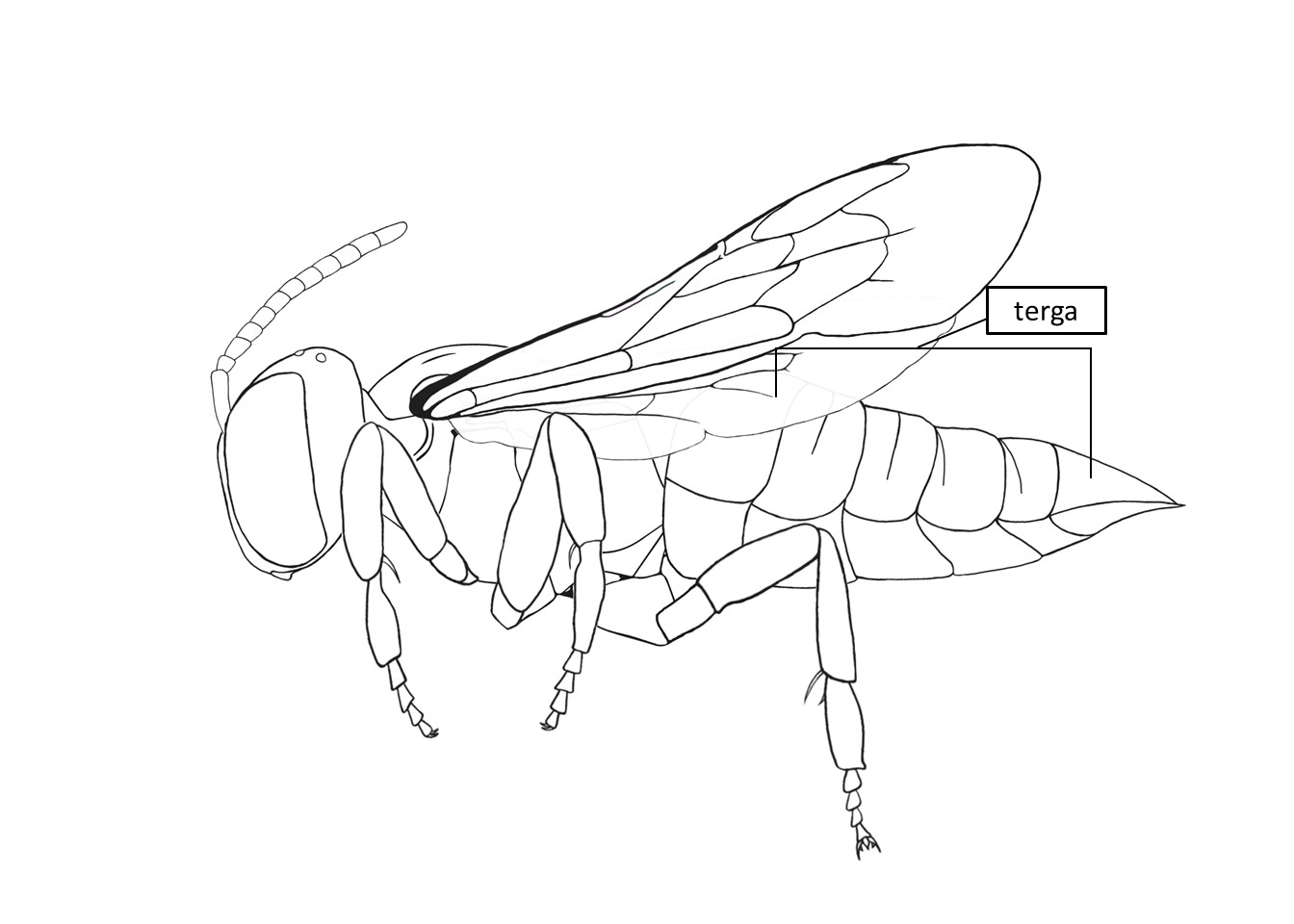
, and
scutellumscutellum:
shield shaped plate behind scutum
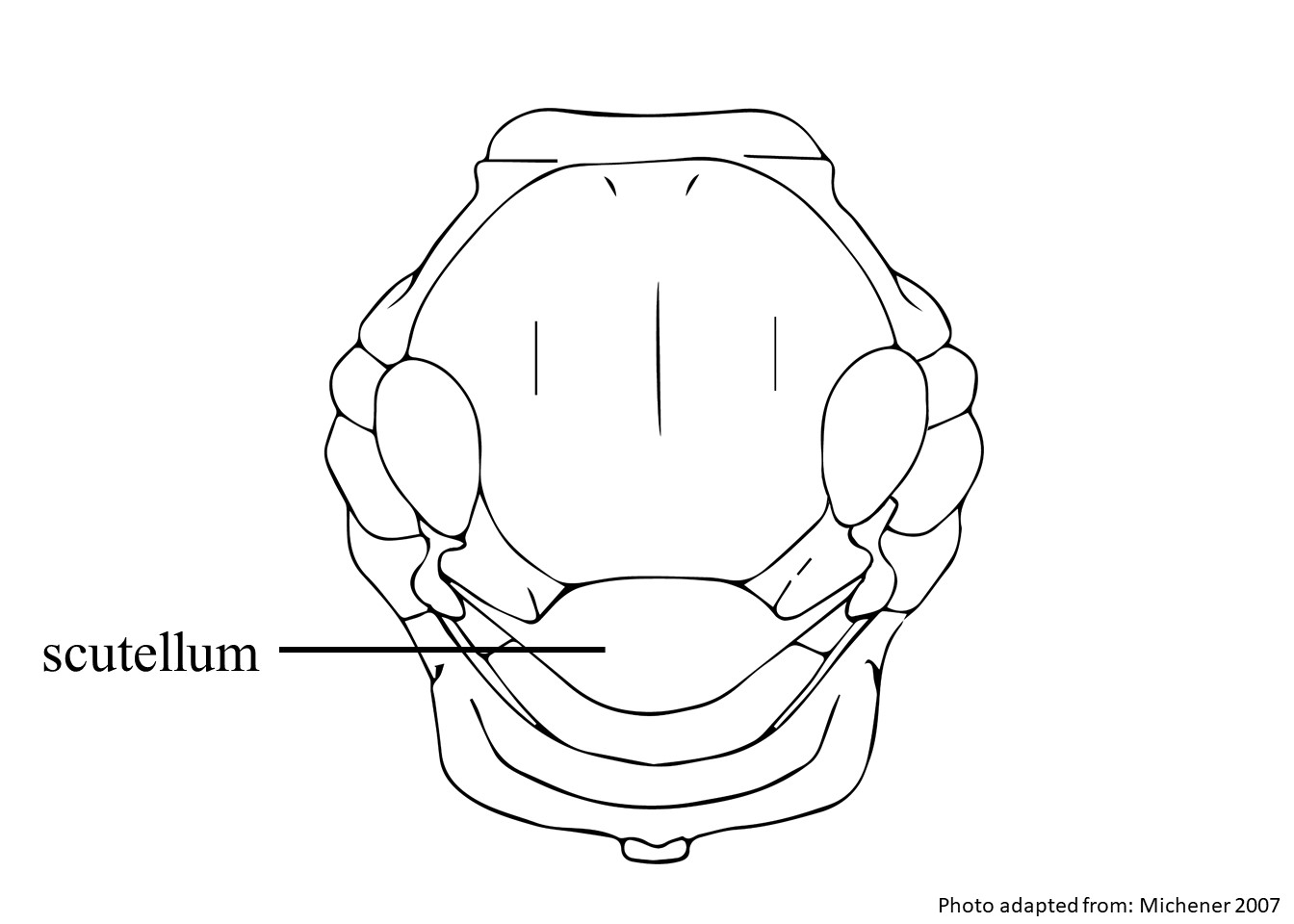
. Their legs are predominantly yellow to orange and may be black at the base. The size of the yellow portions varies within the species. They have a thin coat of white
pubescencepubescence:
short, fine hair
that covers most of their bodies. Their wings are translucent and sometimes slightly brown.
Distribution
Pseudoanthidium stigmaticorne is known from Central Asia and throughout the Mediterranean (
Litman et al. 2021Litman et al. 2021:
Litman, J. R., Fateryga, A. V., Griswold, T. L., Aubert, M., Proshchalykin, M. Y., Le Divelec, R., Burrows, S. & Praz, C. J. 2022. Paraphyly and low levels of genetic divergence in morphologically distinct taxa: revision of the Pseudoanthidium scapulare complex of carder bees (Apoidea: Megachilidae: Anthidiini). Zoological Journal of the Linnean Society, 195(4): 1287-1337.).
Host associations
Pseudoanthidium stigmaticorne have been observed visiting plants from a number of families including: Asteraceae, Fabaceae, Lamiaceae, Plantaginaceae, Plumbaginaceae, and Zygophyllaceae (Litman et al 2021).
Diagnostic characteristics
(Modified from Litman et al. 2021Litman et al. 2021:
Litman, J. R., Fateryga, A. V., Griswold, T. L., Aubert, M., Proshchalykin, M. Y., Le Divelec, R., Burrows, S. & Praz, C. J. 2022. Paraphyly and low levels of genetic divergence in morphologically distinct taxa: revision of the Pseudoanthidium scapulare complex of carder bees (Apoidea: Megachilidae: Anthidiini). Zoological Journal of the Linnean Society, 195(4): 1287-1337.)
-
Female clypeusclypeus:
a section of the face below the antennae, demarcated by the epistomal sutures
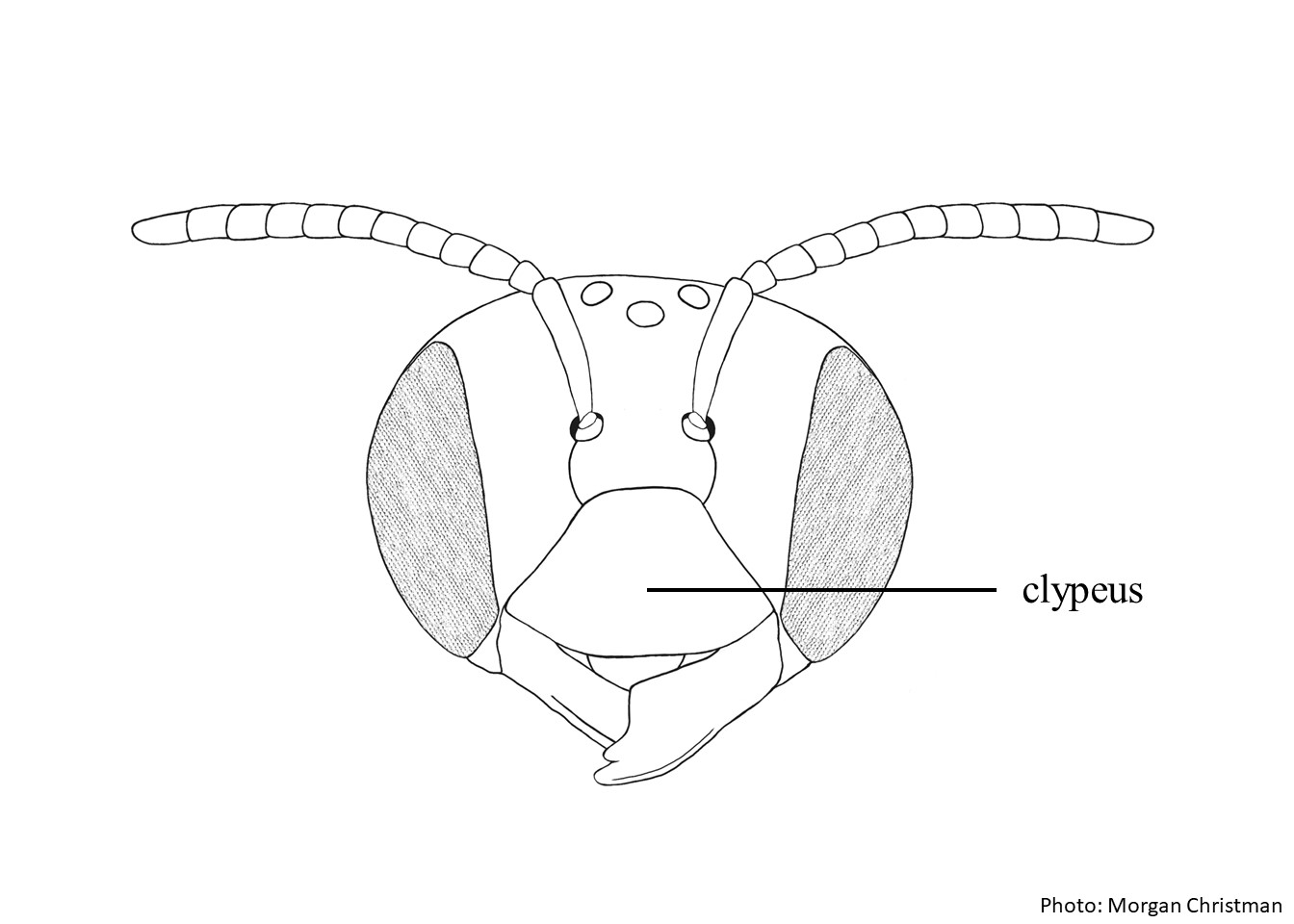 can be entirely black to entirely yellow.
can be entirely black to entirely yellow.
-
Female vertexvertex:
the area between the ocelli and the back of the head
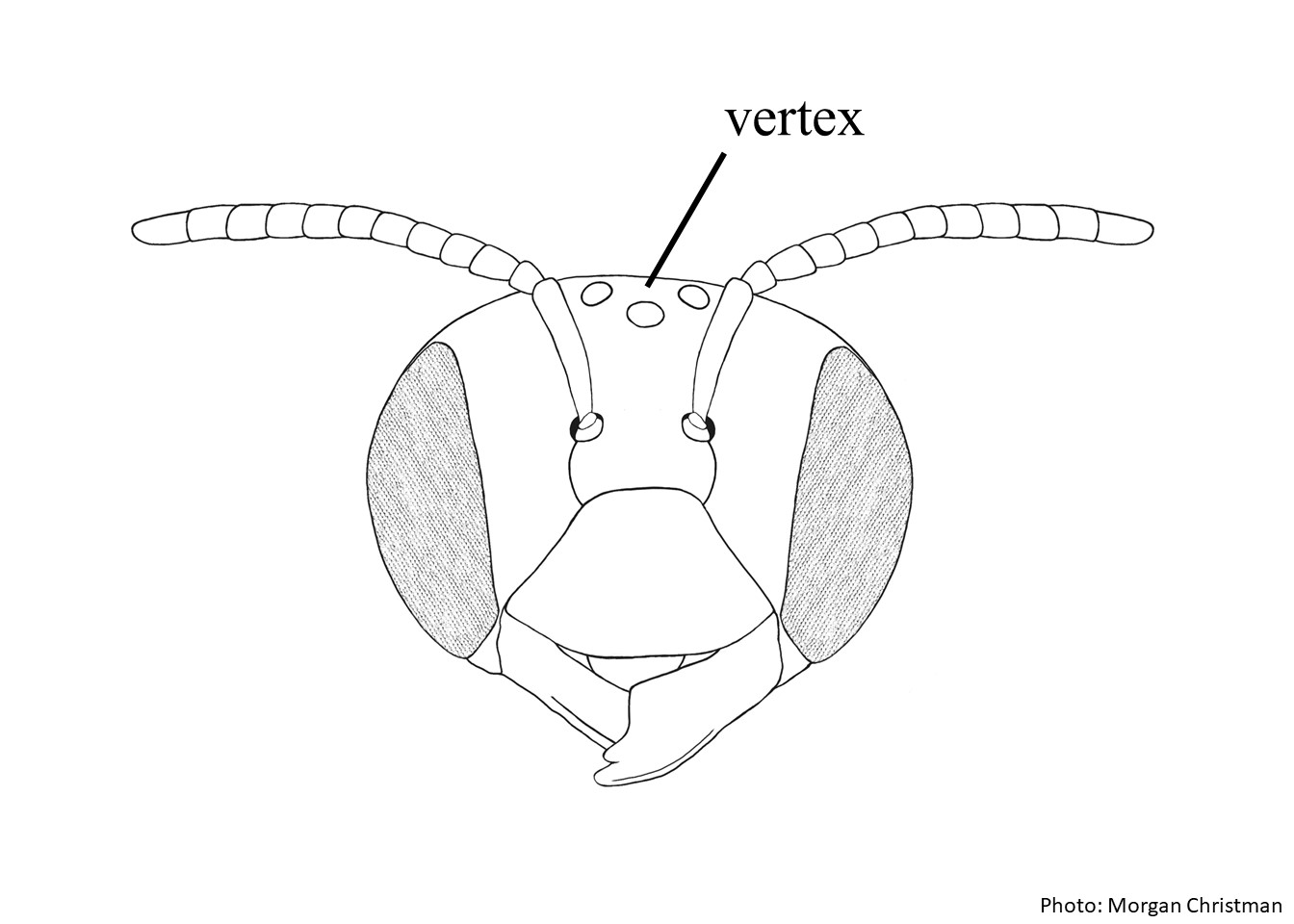 with small, but distinct punctures.
with small, but distinct punctures.
-
Female T1–T2 punctationpunctation:
overall pattern of the punctures on a surface of a bee, includes size of punctures and the distance between them
dense and coarse, as large as or larger than punctationpunctation:
overall pattern of the punctures on a surface of a bee, includes size of punctures and the distance between them
on scutumscutum:
the large segment on top of the thorax located between the wings and behind the head
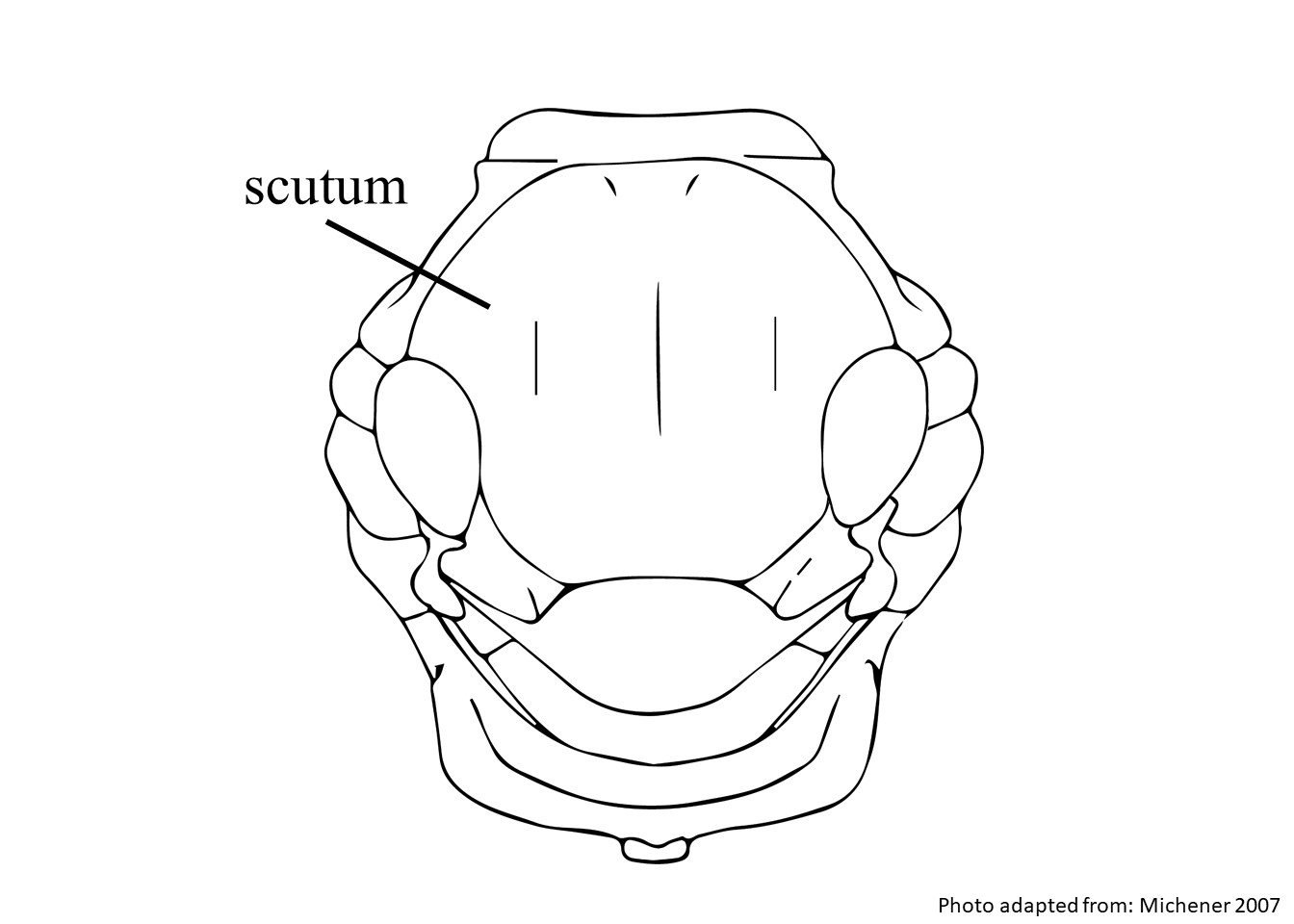 , with shiny interspaces.
, with shiny interspaces.
-
Male gonostylusgonostylus:
the apical-most appendage of the male genitalia, which is usually quite hairy
approximately 1.5x wider at widest point than at the base. Notch at the apexapex:
end of any structure
approximately as deep as wide or less.
-
Male S3S3:
the plates on the underside of the abdomen, often abbreviated when referring to a specific segment to S1, S2, S3, S4, S5, S6, S7, or S8
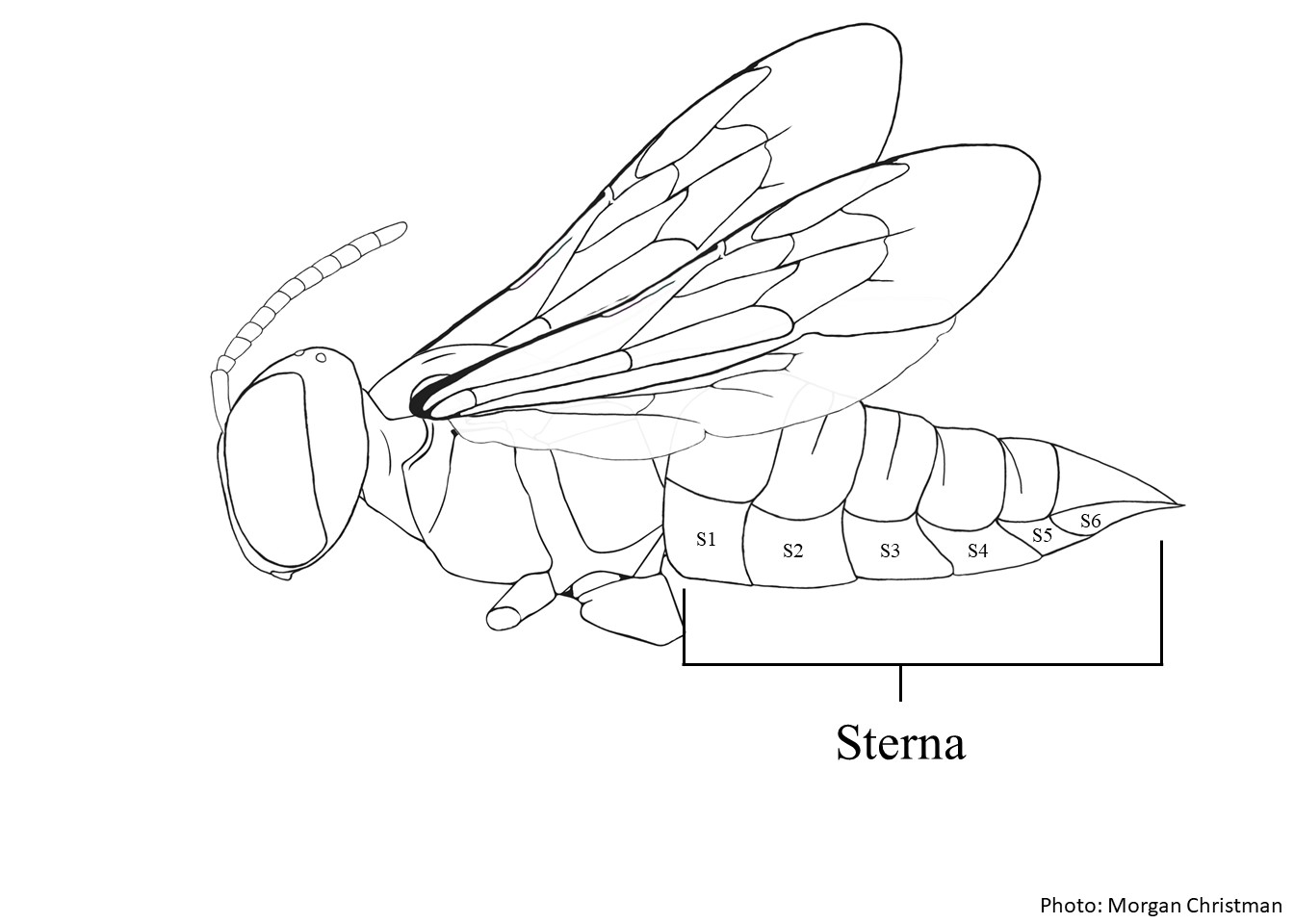 premarginal brush with strongly hooked hairs at the tips.
premarginal brush with strongly hooked hairs at the tips.
-
Male S3S3:
the plates on the underside of the abdomen, often abbreviated when referring to a specific segment to S1, S2, S3, S4, S5, S6, S7, or S8
 without shiny hairless zone.
without shiny hairless zone.
-
Male laterallateral:
relating, pertaining, or attached to the side
combs on S5S5:
the plates on the underside of the abdomen, often abbreviated when referring to a specific segment to S1, S2, S3, S4, S5, S6, S7, or S8
 small, with the apexapex:
small, with the apexapex:
end of any structure
no wider than the arm proceeding it.
-
Male hind trochantertrochanter:
segment of the insect leg between the coxa and the femur
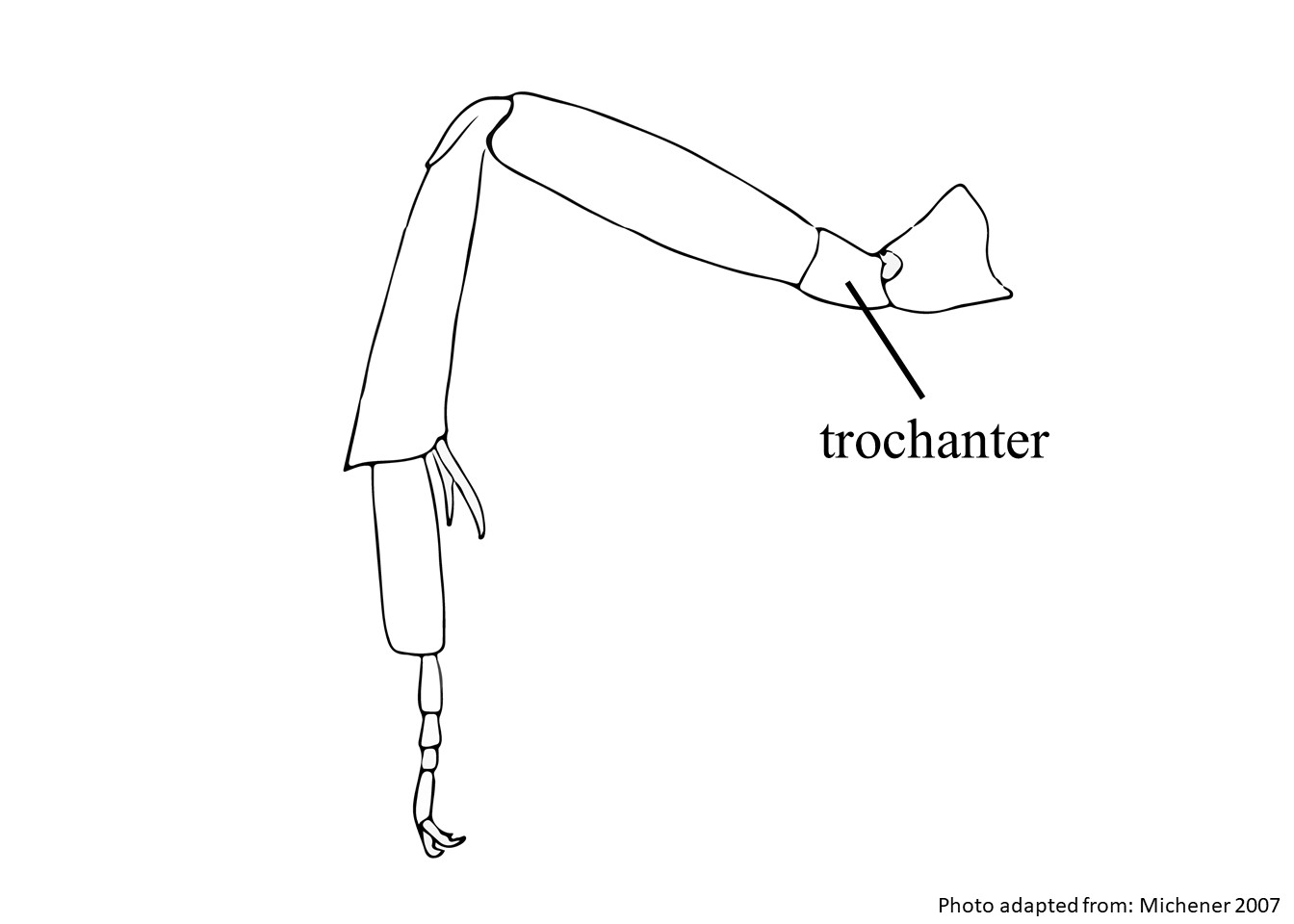 hairs shaggy and uneven.
hairs shaggy and uneven.
May be confused with
Pseudoanthidium stigmaticorne males are most similar to
P. nanum but can be distinguished by the lack of a shiny, hairless zone on
S3S3:
the plates on the underside of the abdomen, often abbreviated when referring to a specific segment to S1, S2, S3, S4, S5, S6, S7, or S8

and the shaggy, uneven hairs on the hind
trochantertrochanter:
segment of the insect leg between the coxa and the femur

. Females are most similar to
P. kaspareki and can be difficult to separate but they have smaller and denser
punctationpunctation:
overall pattern of the punctures on a surface of a bee, includes size of punctures and the distance between them
on the
tergaterga:
the segments on the top side of the abdomen, often abbreviated when referring to a specific segment to T1, T2, T3, T4, T5, T6, or T7

(
Litman et al. 2021Litman et al. 2021:
Litman, J. R., Fateryga, A. V., Griswold, T. L., Aubert, M., Proshchalykin, M. Y., Le Divelec, R., Burrows, S. & Praz, C. J. 2022. Paraphyly and low levels of genetic divergence in morphologically distinct taxa: revision of the Pseudoanthidium scapulare complex of carder bees (Apoidea: Megachilidae: Anthidiini). Zoological Journal of the Linnean Society, 195(4): 1287-1337.).
Nesting behavior
Pseudoanthidium stigmaticorne has been observed nesting in a capsule of
Tulipa biflora, as well as nesting in a stem of
Crambe maritima. (
Litman et al. 2021Litman et al. 2021:
Litman, J. R., Fateryga, A. V., Griswold, T. L., Aubert, M., Proshchalykin, M. Y., Le Divelec, R., Burrows, S. & Praz, C. J. 2022. Paraphyly and low levels of genetic divergence in morphologically distinct taxa: revision of the Pseudoanthidium scapulare complex of carder bees (Apoidea: Megachilidae: Anthidiini). Zoological Journal of the Linnean Society, 195(4): 1287-1337.).
Known invasives
There are no known invasives.
 , and scutellumscutellum:
, and scutellumscutellum: can be entirely black to entirely yellow.
with small, but distinct punctures.
, with shiny interspaces.
 premarginal brush with strongly hooked hairs at the tips.
premarginal brush with strongly hooked hairs at the tips. without shiny hairless zone.
without shiny hairless zone. small, with the apexapex:
small, with the apexapex: hairs shaggy and uneven.
 and the shaggy, uneven hairs on the hind trochantertrochanter:
and the shaggy, uneven hairs on the hind trochantertrochanter: (Litman et al. 2021Litman et al. 2021:
(Litman et al. 2021Litman et al. 2021: